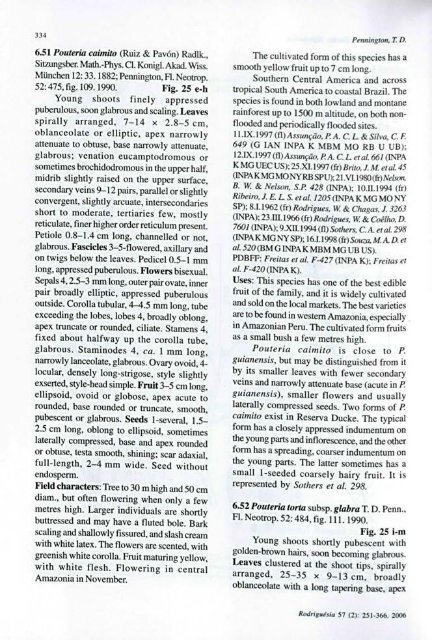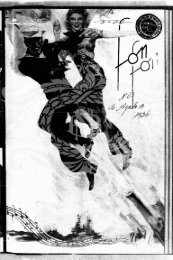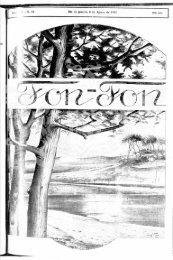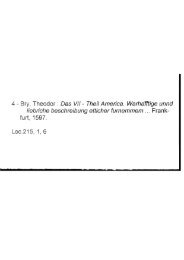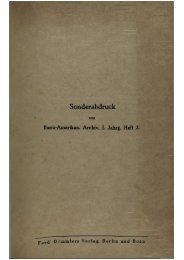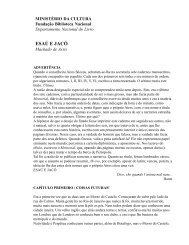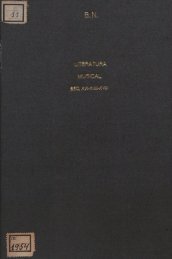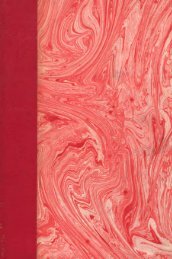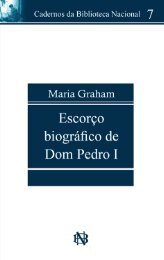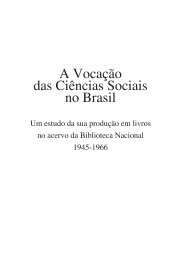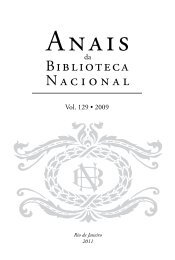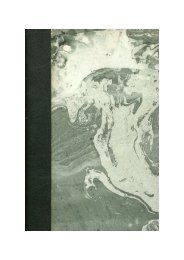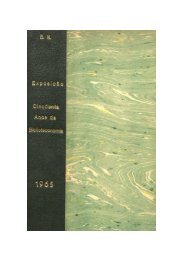RODRIGUESIA Revista do Jardim Botânico do Rio de Janeiro
RODRIGUESIA Revista do Jardim Botânico do Rio de Janeiro
RODRIGUESIA Revista do Jardim Botânico do Rio de Janeiro
You also want an ePaper? Increase the reach of your titles
YUMPU automatically turns print PDFs into web optimized ePapers that Google loves.
334<br />
6.51 Pouteria caimito (Ruiz & Pavón) Radlk.,<br />
Sitzungsber. Math.-Phys. Cl. Konigl. Akad. Wiss.<br />
München 12:33.1882; Pennington, Fl. Neotrop.<br />
52:475, fíg. 109.1990. Fig. 25 e-h<br />
Young shoots finely appressed<br />
puberulous, soon glabrous and scaling. Leaves<br />
spirally arranged, 7-14 x 2.8-5 cm,<br />
oblanceolate or elliptic, apex narrowly<br />
attenuate to obtuse, base narrowly attenuate,<br />
glabrous; venation eucamptodromous or<br />
sometímes brochi<strong>do</strong>dromous in the upper half,<br />
midrib slightly raised on the upper surface,<br />
secondary veins 9-12 pairs, parallel or slightly<br />
convergent, slightly arcuate, intersecondaries<br />
short to mo<strong>de</strong>rate, tertiaries few, mostly<br />
reticulate, finer higher or<strong>de</strong>r reticulum present.<br />
Petiole 0.8-1.4 cm long, channelled or not,<br />
glabrous. Fascicles 3-5-flowered, axillary and<br />
on twigs below the leaves. Pedicel 0.5-1 mm<br />
long, appressed puberulous. Flowers bisexual.<br />
Sepals 4,2.5-3 mm long, outer pair ovate, inner<br />
pair broadly elliptic, appressed puberulous<br />
outsi<strong>de</strong>. Corolla tubular, 4-4.5 mm long, tube<br />
exceeding the lobes, lobes 4, broadly oblong,<br />
apex truncate or roun<strong>de</strong>d, ciliate. Stamens 4,<br />
fixed about halfway up the corolla tube,<br />
glabrous. Stamino<strong>de</strong>s 4, ca. 1 mm long,<br />
narrowly lanceolate, glabrous. Ovary ovoid, 4locular,<br />
<strong>de</strong>nsely long-strigose, style slightly<br />
exserted, style-head simple. Fruit 3-5 cm long,<br />
ellipsoid, ovoid or globose, apex acute to<br />
roun<strong>de</strong>d, base roun<strong>de</strong>d or truncate, smooth,<br />
pubescent or glabrous. Seeds 1-several, 1.5-<br />
2.5 cm long, oblong to ellipsoid, sometimes<br />
laterally compressed, base and apex roun<strong>de</strong>d<br />
or obtuse, testa smooth, shining; scar adaxial,<br />
full-length, 2-4 mm wi<strong>de</strong>. Seed without<br />
en<strong>do</strong>sperm.<br />
Field characters: Tree to 30 m high and 50 cm<br />
diam., but often flowering when only a few<br />
metres high. Larger individuais are shortly<br />
buttressed and may have a fluted bole. Bark<br />
scaling and shallowly fissured, and slash cream<br />
with white látex. The flowers are scented, with<br />
greenish white corolla. Fruit maturing yellow,<br />
with white flesh. Flowering in central<br />
Amazônia in November.<br />
Pennington, T. D.<br />
The cultivated form of this species has a<br />
smooth yellow fruit up to 7 cm long.<br />
Southern Central America and across<br />
tropical South America to coastal Brazil. The<br />
species is found in both lowland and montane<br />
rainforest up to 1500 m altitu<strong>de</strong>, on both nonfloo<strong>de</strong>d<br />
and periodically floo<strong>de</strong>d sites.<br />
11 .IX. 1997 (fl) Assunção, P. A.C.L& Silva, C F.<br />
649 (G IAN INPA K MBM MO RB U UB);<br />
12.IX. 1997 (fl) Assunção, PA CL et ai. 661 (INPA<br />
K MG UEC US); 25.XI. 1997 (fr) Brito, J. M. et ai. 45<br />
(INPAKMGMONYRBSPU);21.VL1980(fr)^Zsm<br />
B. W. & Nelson, S.P 428 (INPA); 10.11.1994 (fr)<br />
Ribeiro, J. E. L S. et ai. 1205 (INPA K MG MO NY<br />
SP); 8.1.1962 (fr) Rodrigues, W. & Chagas, J. 3263<br />
(INPA); 23.111.1966 (fr) Rodrigues, W. & Coelho, D.<br />
7601 (INPA); 9.XII. 1994 (fl) Sothers, C A. et ai. 298<br />
(INPAKMG NY SP); 16.1.1998 (fr)Sow^, M.A.D. et<br />
ai. 520 (BM G INPA K MBM MG UB US).<br />
PDBFF: Freitas et ai. F-427 (INPA K); Freitas et<br />
ai. F-420 (INPA K).<br />
Uses: This species has one of the best edible<br />
fruit of the family, and it is wi<strong>de</strong>ly cultivated<br />
and sold on the local markets. The best varieties<br />
are to be found in western Amazônia, especially<br />
in Amazonian Peru. The cultivated form fruits<br />
as a small bush a few metres high.<br />
Pouteria caimito is close to P.<br />
guianensis, but may be distinguished from it<br />
by its smaller leaves with fewer secondary<br />
veins and narrowly attenuate base (acute in P.<br />
guianensis), smaller flowers and usually<br />
laterally compressed seeds. Two forms of P.<br />
caimito exist in Reserva Ducke. The typical<br />
form has a closely appressed indumentum on<br />
the young parts and inflorescence, and the other<br />
form has a spreading, coarser indumentum on<br />
the young parts. The latter sometimes has a<br />
small 1-see<strong>de</strong>d coarsely hairy fruit. It is<br />
represented by Sothers et ai. 298.<br />
6.52 Pouteria torta subsp. glabra T. D. Penn.,<br />
Fl. Neotrop. 52:484, fig. 111. 1990.<br />
Fig. 25 i-m<br />
Young shoots shortly pubescent with<br />
gol<strong>de</strong>n-brown hairs, soon becoming glabrous.<br />
Leaves clustered at the shoot tips, spirally<br />
arranged, 25-35 x 9-13 cm, broadly<br />
oblanceolate with a long tapering base, apex<br />
Rodrigufsia 57 (2): 251-366. 2006


